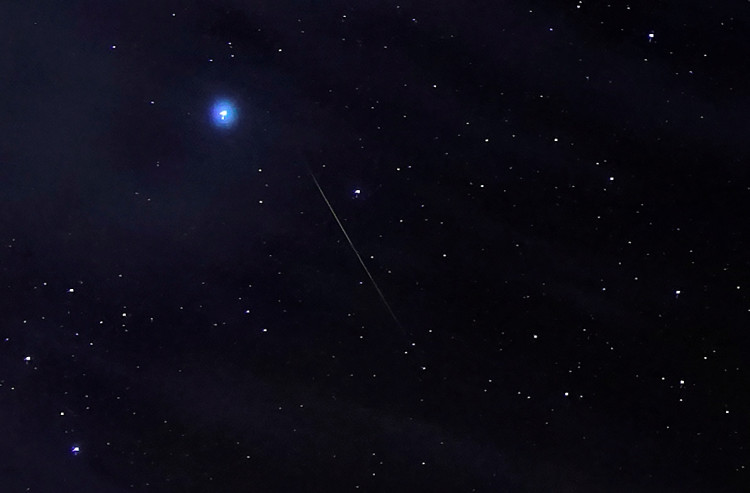The annual Orionid meteor shower will again grace Earth, peaking on Thursday morning, NASA said.
The Orionids are expected to peak early Thursday morning, Oct. 21. In ideal conditions (a dark, moonless sky), approximately 20 of these extremely fast meteors can be seen per hour. For roughly two days before and after Oct. 21, the shower comes at about one-quarter peak strength.
However, if you want to see these meteors this year, you'll have to contend with a nearly full moon. The full moon in October is known as the "Hunter's Moon," and it will occur on Wednesday, Oct. 20. When the Orionids reach their peak early tomorrow morning, it will be waning (losing luminosity), but it will still be nearly full.
As a result, most of these light streaks will be obliterated by the bright moonlight. Even so, an unusually bright Orionid meteor, darting from the constellation Orion (from which the name "Orionid"), might still be seen.
"The Orionids are going to, frankly, suck this year," NASA meteor expert Bill Cooke told Space.com. "The moon will be up all night, from sunset to sunrise."
Meteors are formed from the rocky fragments left over after a comet passes close to the sun. The showers happen as the Earth travels through one of those debris fields. According to NASA, the Orionids are made up of ice and dust produced by Halley's Comet when it enters the inner solar system.
Orionids are notorious for their speed, careening into Earth's atmosphere at 148,000 miles per hour. They're also distinctively brilliant. When Orionid meteors fly through, they can leave luminous "trains" behind them and occasionally develop into fireballs.
Despite the fact that the full moon may make it impossible to see the entire meteor shower, you can still try to catch a glimpse on Wednesday night or Thursday morning.
NASA's advice is as follows: After midnight, gather your belongings, such as a chair or a blanket, and find a site away from city or street lights. If you're in the Northern Hemisphere, lie down with your feet facing southeast; if you're in the Southern Hemisphere, lie down with your feet facing northeast. Then simply raise your head and wait.






